Cause of death Heart attack Years active 1925–1938 Nationality American Name Louise Brooks | Other names Lulu Role Film actress Occupation Actress, dancer | |
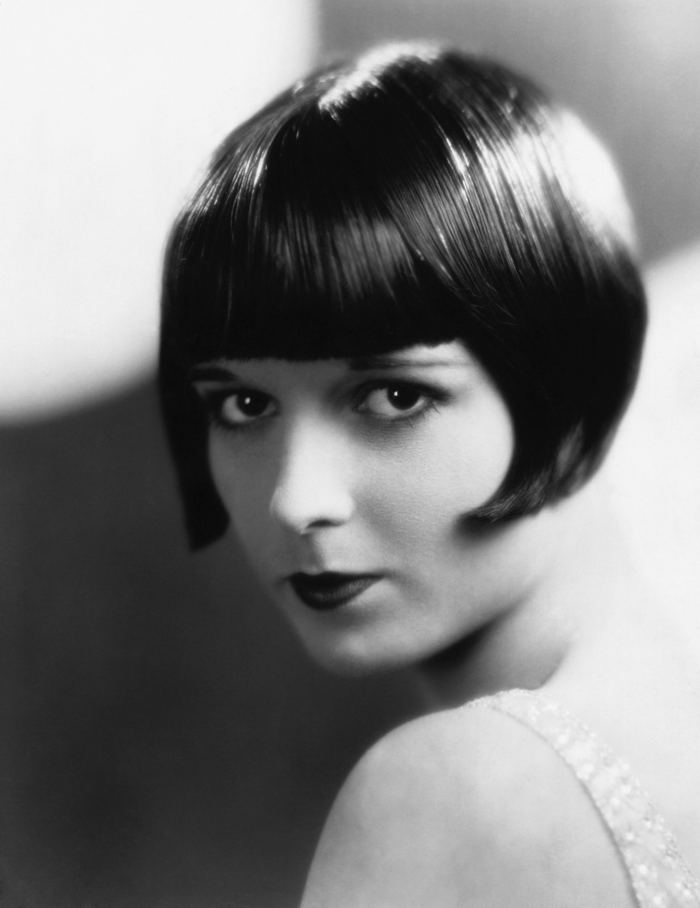 | ||
Full Name Mary Louise Brooks Resting place Holy Sepulchre Cemetery Books Lulu in Hollywood, Lulu in Berlin und Hollywood, Lulu a Hollywood, Louise Brooks Movies Pandora's Box, Diary of a Lost Girl, Beauty Prize, Beggars of Life, The Canary Murder C Similar People Clara Bow, G W Pabst, Greta Garbo, Gloria Swanson, Rudolph Valentino | ||
louise brooks from mysteries and scandals documentary biography
Mary Louise Brooks (November 14, 1906 – August 8, 1985), who worked professionally as Louise Brooks, was an American film actress and dancer noted as an iconic symbol of the flapper, and for popularizing the bobbed haircut.
Contents
- louise brooks from mysteries and scandals documentary biography
- Louise Brooks Rediscovered Silent Film Star
- Early life
- American films
- In Europe
- Life after film
- Rediscovery
- Marriages and relationships
- Sexuality
- Death
- Legacy
- In popular culture
- Filmography
- References
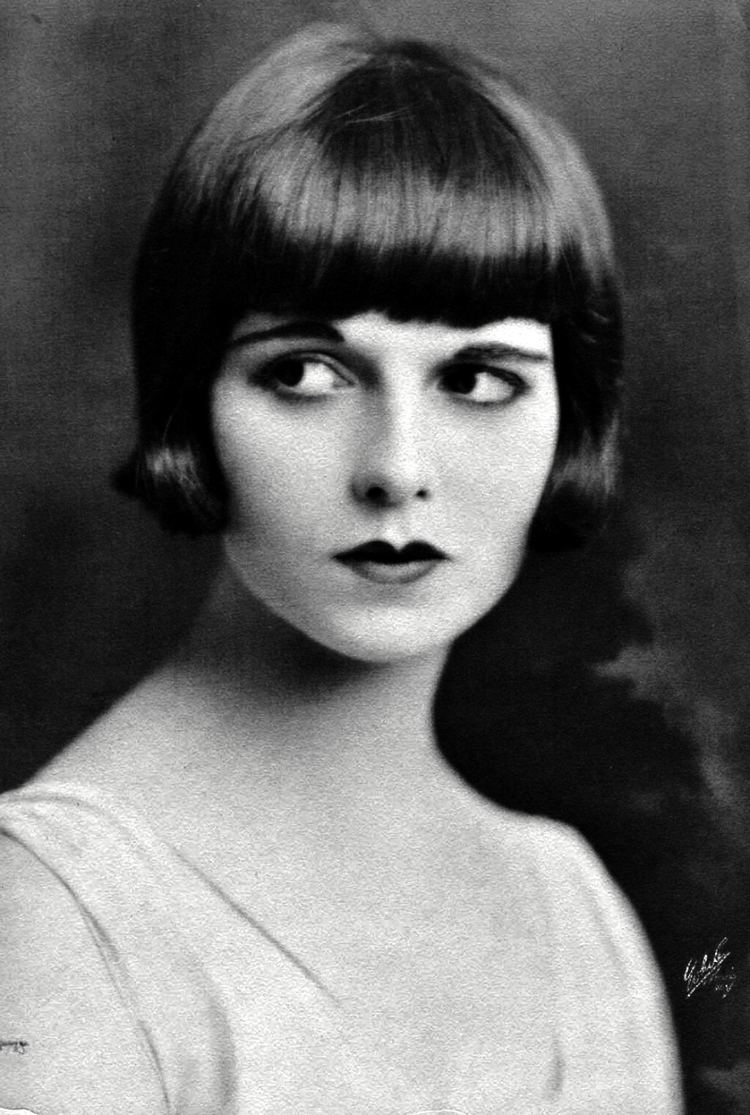
Brooks is best known as the lead in three feature films made in Europe: Pandora's Box (1929), Diary of a Lost Girl (1929), and Miss Europe (1930); the first two were made by G. W. Pabst. She starred in seventeen silent films and eight sound films before retiring in 1938. Brooks published her memoir, Lulu in Hollywood, in 1982; three years later she died of a heart attack at the age of 78.
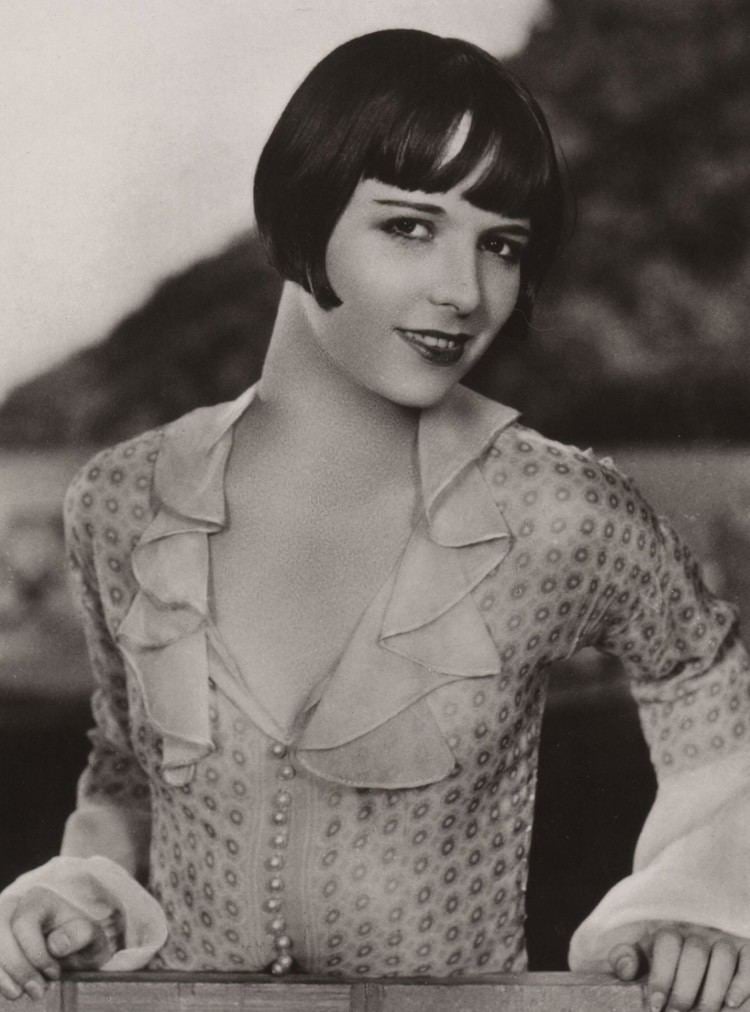
Louise Brooks "Rediscovered Silent Film Star"
Early life

Born in Cherryvale, Kansas, Louise Brooks was the daughter of Leonard Porter Brooks, a lawyer, who was usually too busy with his practice to discipline his children, and Myra Rude, an artistic mother who determined that any "squalling brats she produced could take care of themselves".
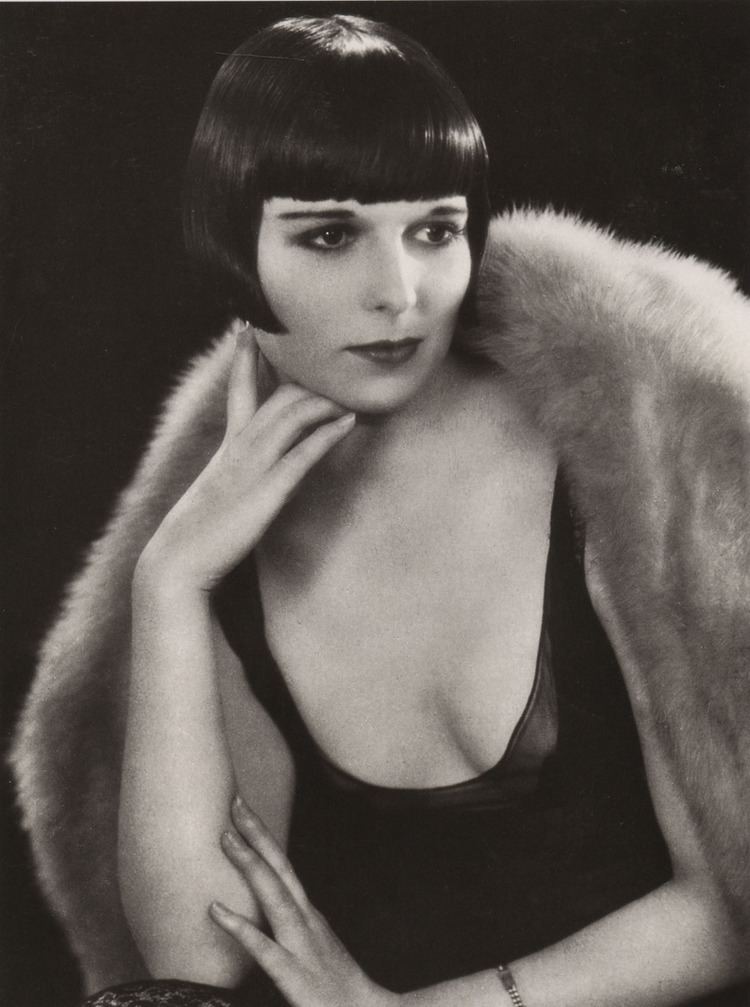
Rude was a talented pianist who played the latest Debussy and Ravel for her children, inspiring them with a love of books and music.

When she was nine years old, a neighborhood predator sexually abused Louise. This event had a major influence on Brooks' life and career, causing her to say in later years that she was incapable of real love, and that this man "must have had a great deal to do with forming my attitude toward sexual pleasure....For me, nice, soft, easy men were never enough – there had to be an element of domination". When Brooks at last told her mother of the incident, many years later, her mother suggested that it must have been Louise's fault for "leading him on".
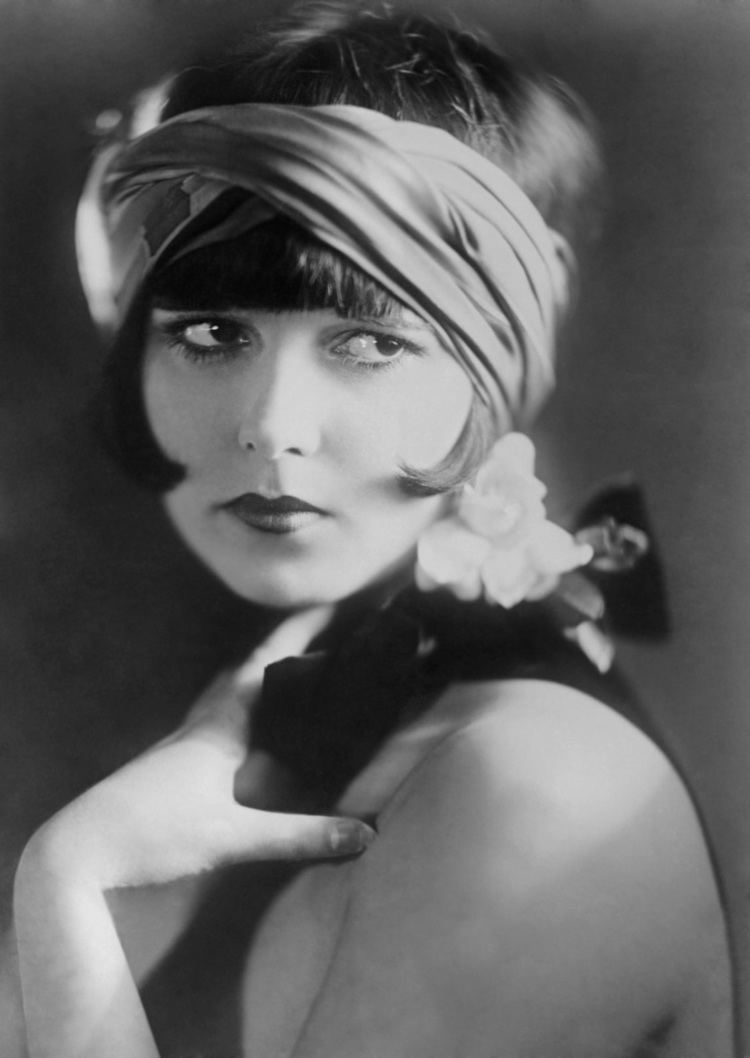
Brooks began her entertainment career as a dancer, joining the Denishawn modern dance company in Los Angeles (whose members included founders Ruth St. Denis, and Ted Shawn, as well as a young Martha Graham) in 1922. In her second season with the company, Brooks had advanced to a starring role in one work opposite Shawn. A long-simmering personal conflict between Brooks and St. Denis boiled over one day, however, and St. Denis abruptly fired Brooks from the troupe in 1924, telling her in front of the other members that "I am dismissing you from the company because you want life handed to you on a silver salver". The words left a strong impression on Brooks; when she drew up an outline for a planned autobiographical novel in 1949, "The Silver Salver" was the title she gave to the tenth and final chapter.
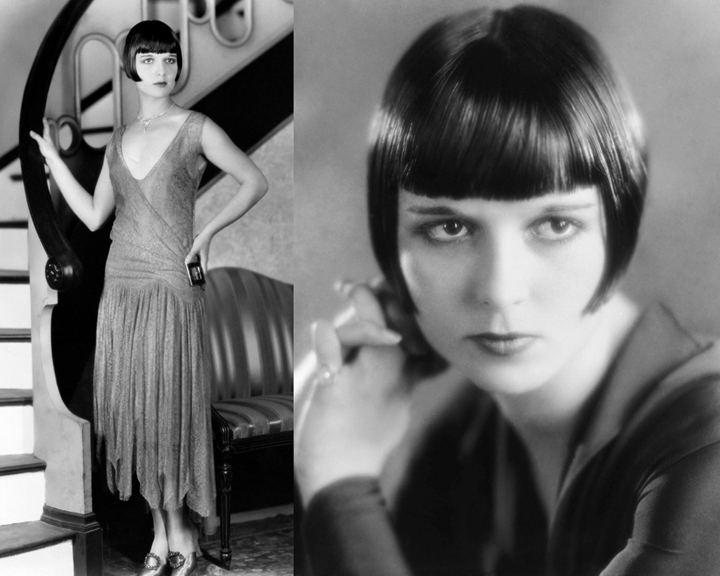
Thanks to her friend Barbara Bennett (sister of Constance and Joan), Brooks almost immediately found employment as a chorus girl in George White's Scandals, followed by an appearance as a featured dancer in the 1925 edition of the Ziegfeld Follies on Broadway. As a result of her work in the Follies, she came to the attention of Paramount Pictures producer Walter Wanger, who signed her to a five-year contract with the studio in 1925. (She was also noticed by visiting movie star Charlie Chaplin, who was in town for the premiere of his film The Gold Rush. The two had a two month affair that summer).
American films
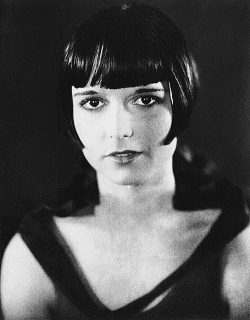
Brooks made her screen debut in the silent The Street of Forgotten Men, in an uncredited role in 1925. Soon, however, she was playing the female lead in a number of silent light comedies and flapper films over the next few years, starring with Adolphe Menjou and W. C. Fields, among others.
She was noticed in Europe for her pivotal vamp role in the Howard Hawks directed silent "buddy film", A Girl in Every Port in 1928.
In an early sound film drama, Beggars of Life (1928), Brooks played an abused country girl who kills her foster father in a moment of desperation. A hobo, Richard Arlen, happens on the murder scene and convinces Brooks to disguise herself as a young boy and escape the law by "riding the rails" with him. In a hobo encampment, or "jungle," they meet another hobo, Wallace Beery. Brooks's disguise is soon uncovered and she finds herself the only female in a world of brutal, sex-hungry men. Much of this film was shot on location, and the boom microphone was invented for this film by the director William Wellman, who needed it for one of the first experimental talking scenes in the movies.
By this time in her life, she was mixing with the rich and famous, and was a regular guest of William Randolph Hearst and his mistress, Marion Davies, at San Simeon, being close friends with Davies' niece, Pepi Lederer. Her distinctive bob haircut helped start a trend; many women styled their hair in imitation of her and fellow film star Colleen Moore. Soon after the film Beggars Of Life was made, Brooks, who loathed the Hollywood "scene", refused to stay on at Paramount after being denied a promised raise, and left for Europe to make films for G. W. Pabst, the prominent Austrian Expressionist director.
Paramount attempted to use the coming of sound films to pressure the actress, but she called the studio's bluff. It was not until 30 years later that this rebellious move would come to be seen as arguably the most savvy of her career, securing her immortality as a silent film legend and independent spirit. Unfortunately, while her initial snubbing of Paramount alone would not have finished her in Hollywood altogether, her refusal after returning from Germany to come back to Paramount for sound retakes of The Canary Murder Case (1929) irrevocably placed her on an unofficial blacklist. Actress Margaret Livingston was hired to dub Brooks's voice for the film, as the studio claimed that Brooks' voice was unsuitable for sound pictures.
In Europe
Once in Germany, she starred in the 1929 film Pandora's Box, directed by Georg Wilhelm Pabst in his New Objectivity period. The film is based on two plays by Frank Wedekind (Erdgeist and Die Büchse der Pandora) and Brooks plays the central figure, Lulu. This film is notable for its frank treatment of modern sexual mores, including one of the first screen portrayals of a lesbian. Brooks then starred in the controversial social drama Diary of a Lost Girl (1929), based on the book by Margarete Böhme and also directed by Pabst, and Miss Europe (1930) by Italian director Augusto Genina, the latter being filmed in France, and having a famous surprise ending. All these films were heavily censored, as they were very "adult" and considered shocking in their time for their portrayals of sexuality, as well as their social satire.
Life after film
When she returned to Hollywood in 1931, she was cast in two mainstream films: God's Gift to Women (1931) and It Pays to Advertise (1931). Her performances in these films, however, were largely ignored, and few other job offers were forthcoming due to her informal "blacklisting".
Despite this, William Wellman, her director on Beggars of Life, offered her the female lead in his new picture, The Public Enemy starring James Cagney. However, Brooks turned down the role in order to visit her then-lover George Preston Marshall in New York City, and the part instead went to Jean Harlow, who began her own rise to stardom largely as a result. Brooks later explained herself to Wellman by saying that she hated making pictures because she simply "hated Hollywood", and according to film historian James Card, who came to know Brooks intimately later in her life, "she just wasn't interested .... She was more interested in Marshall".
In the opinion of Brooks's biographer Barry Paris, "turning down Public Enemy marked the real end of Louise Brooks's film career". She made one more film at that time, a comedy short, Windy Riley Goes Hollywood (1931), directed by Hollywood outcast Roscoe "Fatty" Arbuckle, working under the pseudonym "William Goodrich".
Brooks declared bankruptcy in 1932 and began dancing in nightclubs to earn a living. She attempted a comeback in 1936, and did a bit part in the Western Empty Saddles, which led Columbia to offer her a screen test, contingent on appearing in the 1937 musical When You're in Love, uncredited, as a specialty ballerina in the chorus. She made two more films after that, including the lead opposite John Wayne in Overland Stage Raiders (1938), a "B" Western in which she played the romantic lead with a long hairstyle that rendered her all but unrecognizable from her Lulu days.
Brooks then briefly returned to Wichita, where she was raised. "But that turned out to be another kind of hell," she said. "The citizens of Wichita either resented me having been a success or despised me for being a failure. And I wasn't exactly enchanted with them. I must confess to a lifelong curse: My own failure as a social creature." After an unsuccessful attempt at operating a dance studio, she returned East and, after brief stints as a radio actor and a gossip columnist, worked as a salesgirl in a Saks Fifth Avenue store in New York City for a few years, then lived as a courtesan with a few select wealthy men as clients.
I found that the only well-paying career open to me, as an unsuccessful actress of thirty-six, was that of a call girl ... and (I) began to flirt with the fancies related to little bottles filled with yellow sleeping pills.
Brooks had been a heavy drinker since the age of 14, but she remained relatively sober to begin writing about film, which became her second career. During this period she began her first major writing project, an autobiographical novel called Naked on My Goat, a title taken from Goethe's Faust. After working on the novel for a number of years, she destroyed the manuscript by throwing it into an incinerator.
She was a notorious spendthrift for most of her life, and was kind and generous to her friends, almost to a fault.
Rediscovery
French film historians rediscovered her films in the early 1950s, proclaiming her as an actress who surpassed even Marlene Dietrich and Greta Garbo as a film icon, much to her amusement. It would lead to the still ongoing Louise Brooks film revivals, and rehabilitated her reputation in her home country.
James Card, the film curator for the George Eastman House, discovered Brooks living as a recluse in New York City about this time, and persuaded her to move to Rochester, New York to be near the George Eastman House film collection. With his help, she became a noted film writer in her own right. A collection of her writings, Lulu in Hollywood, was published in 1982. She was profiled by the film writer Kenneth Tynan in his essay, "The Girl in The Black Helmet", the title of which was an allusion to her bobbed hair, worn since childhood, a hairstyle she helped popularize, along with earlier actresses such as Colleen Moore.
She rarely gave interviews, but had special relationships with film historians John Kobal and Kevin Brownlow. In the 1970s she was interviewed extensively, on film, for the documentaries Memories of Berlin: The Twilight of Weimar Culture (1976), produced and directed by Gary Conklin, and for the documentary series Hollywood (1980) by Brownlow and David Gill. Lulu in Berlin (1984) is another rare filmed interview, produced by Richard Leacock and Susan Woll, released a year before her death, but filmed a decade earlier. Author Tom Graves was allowed into Brooks' apartment for an interview in 1982, and later wrote about the at times awkward and tense conversation in his article "My Afternoon With Louise Brooks" that is the lead piece in his book Louise Brooks, Frank Zappa, & Other Charmers & Dreamers.
Marriages and relationships
In the summer of 1926, Brooks married Eddie Sutherland, the director of the film she made with W. C. Fields, but by 1927 had fallen "terribly in love" with George Preston Marshall, owner of a chain of laundries and future owner of the Washington Redskins football team, following a chance meeting with him that she later referred to as "the most fateful encounter of my life". She divorced Sutherland, mainly due to her budding relationship with Marshall, in June 1928.
In 1933, she married Chicago millionaire Deering Davis, a son of Nathan Smith Davis, Jr., but abruptly left him in March 1934 after only five months of marriage, "without a good-bye... and leaving only a note of her intentions" behind her. According to Card, Davis was just "another elegant, well-heeled admirer", nothing more. The couple officially divorced in 1938.
Despite her two marriages, she never had children, referring to herself as "Barren Brooks". Her many lovers from years before had included a young William S. Paley, the founder of CBS. According to Louise Brooks: Looking For Lulu, Paley provided a small monthly stipend to Brooks for the rest of her life, and according to the documentary this stipend kept her from committing suicide at one point.
She also had an on-again, off-again relationship with George Preston Marshall throughout the 1920s and 1930s (which she described as "abusive"). He was the biggest reason she was able to secure a contract with Pabst. Marshall repeatedly asked her to marry him, but after finding that she had had many affairs while they were together, married film actress Corinne Griffith instead.
Sexuality
By her own admission, Brooks was a sexually liberated woman, not afraid to experiment, even posing fully nude for art photography, and her liaisons with many film people were legendary, although much of it is speculation.
Brooks enjoyed fostering speculation about her sexuality, cultivating friendships with lesbian and bisexual women including Pepi Lederer and Peggy Fears, but eschewing relationships. She admitted to some lesbian dalliances, including a one-night stand with Greta Garbo. She later described Garbo as masculine but a "charming and tender lover". Despite all this, she considered herself neither lesbian nor bisexual:
I had a lot of fun writing 'Marion Davies' Niece' [an article about Pepi Lederer], leaving the lesbian theme in question marks. All my life it has been fun for me. ... When I am dead, I believe that film writers will fasten on the story that I am a lesbian... I have done lots to make it believable [...] All my women friends have been lesbians. But that is one point upon which I agree positively with [Christopher] Isherwood: There is no such thing as bisexuality. Ordinary people, although they may accommodate themselves, for reasons of whoring or marriage, are one-sexed. Out of curiosity, I had two affairs with girls – they did nothing for me.
Death
On August 8, 1985, Brooks was found dead of a heart attack after suffering from arthritis and emphysema for many years. She was buried in Holy Sepulchre Cemetery in Rochester, New York.
Legacy
As is the case with many of her contemporaries, a number of Brooks' films, according to the documentary Looking for Lulu, are considered to be lost. Her key films survive, however, particularly Pandora's Box and Diary of a Lost Girl which have been released to DVD in North America by the Criterion Collection and Kino Video, respectively.
As of 2007, Miss Europe and The Show Off have also seen limited North American DVD release. Her short film (and one of her only talkies) Windy Riley Goes Hollywood was included on the DVD release of Diary of a Lost Girl. Her final film, Overland Stage Raiders, was released on VHS and in 2012 on DVD.
In popular culture
Louise Brooks as an unattainable film image served as an inspiration for Adolfo Bioy Casares when he wrote his science fiction novel The Invention of Morel (1940) about a man attracted to Faustine, a woman who is only a projected 3-D image.
In a 1995 interview, Casares explained that Faustine is directly based on his love for Louise Brooks who "vanished too early from the movies". (Elements of The Invention of Morel, minus the science fiction elements, served as a basis for Alain Resnais's 1961 film Last Year at Marienbad.)
Brooks also had an influence in the graphics world – she had the distinction of inspiring two separate comics: the long-running Dixie Dugan newspaper strip by John H. Striebel that started in the late 1920s and ran until 1966, which grew out of the serialized novel and later stage musical, Show Girl, that writer J.P. McEvoy had loosely based on Louise's days as a Follies girl on Broadway; and the erotic comic books of Valentina, by the late Guido Crepax, which began publication in 1965 and continued for many years. Crepax became a friend and regular correspondent with Louise late in her life. Hugo Pratt, another comics artist, also used her as inspiration for characters, and even named them after her.
